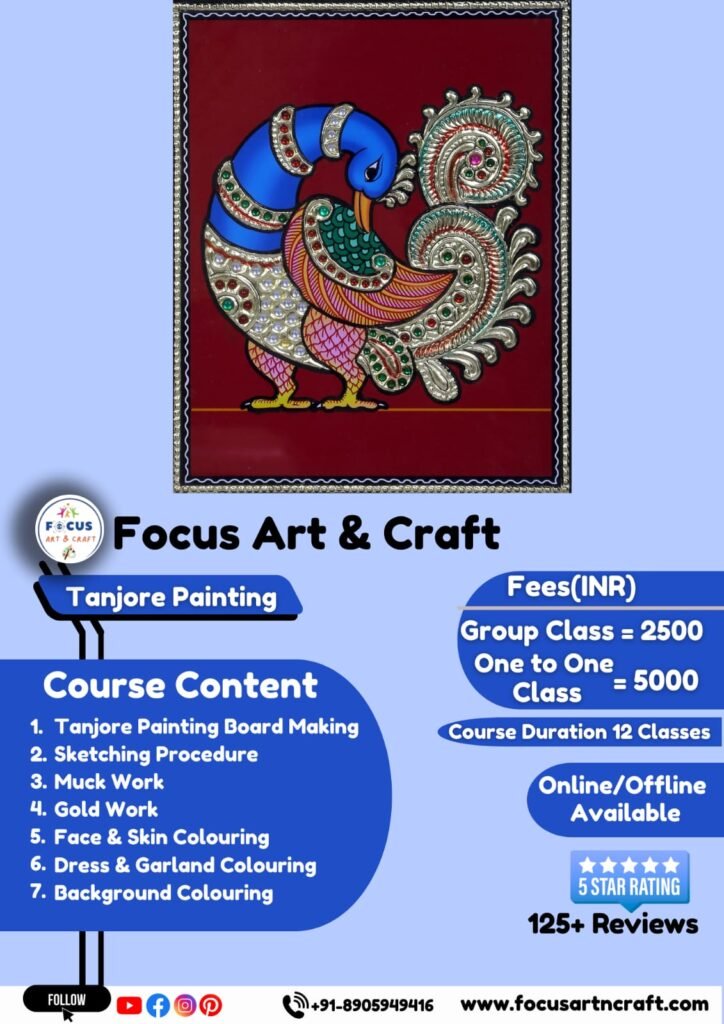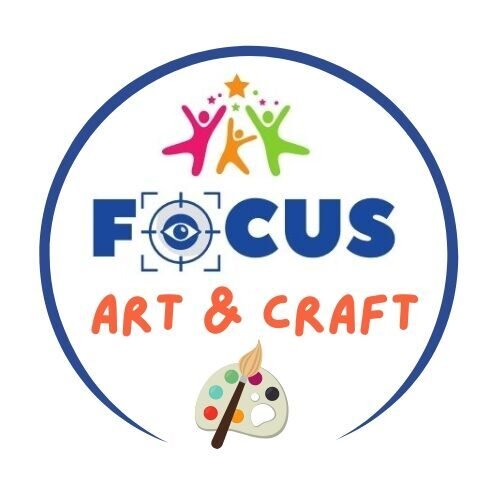
Tanjore Painting
Tanjore painting is a traditional South Indian art form known for its rich colors, gold foil embellishments, and intricate details. Originating from Thanjavur, Tamil Nadu, it typically depicts Hindu gods, goddesses, and mythological themes. These paintings are created on wooden panels using natural pigments, semi-precious stones, and gold leaf, giving them a distinctive, regal appearance.
Course Content:
- Tanjore Painting Board Making
- Sketching Procedure
- Muck Work
- Gold Work
- Face & Skin Colouring
- Dress & Garland Colouring
- Background Colouring
Art Material Required for Tanjore Painting
- 8×10 MDF Board
- Gada Cloth
- Camlin Artist Poster Colour Set
- Arabic Gum
- Flat & Round Brush Set
- 2 Packs of Kundan Stones
- Artificial Tanjore Gold Foil – 10 Leaves
- Carbon Paper
- Muck Powder
- Trace Paper
- Readymade Unfilled Cone Paper
- 1 Foil Embossing Tool
- Fevicol
- Sand Paper
Top 5 Types of Tanjore Painting
Traditional Tanjore Painting
Features rich colors, gold foil, and intricate details depicting Hindu gods and goddesses.Embossed Tanjore Painting
Uses extra layers of gesso work for a 3D effect, enhancing the grandeur of the artwork.Antique Tanjore Painting
Mimics an aged look with muted tones, softer gold work, and a vintage finish.Modern/Contemporary Tanjore Painting
Blends traditional techniques with modern themes, experimenting with new subjects and color schemes.Glass Tanjore Painting
Created on glass surfaces with the same gold foil and vibrant colors, giving a unique translucent effect.
